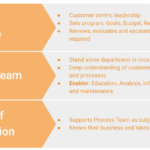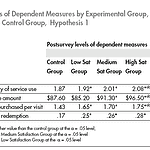In the customer feedback action journey there are several phases of evolution. It starts with simple data collection and ends with customer driven, company-wide, continuous process improvement.
Some of the phases are easy, such as setting up data collection.
Some of them are not so easy. One of the not so easy phases is implementing the continuous improvement process.
That is not to say that the skills and approaches do not exist.
It’s just that continuous improvement and quality system skills are not well known outside the manufacturing industries. In addition, in the customer feedback space there has, until recently, a distinct lack of real time customer feedback information. Deep and wide data are vital to effective continuous improvement outcomes.
Transactional customer feedback approaches have now changed the speed and volume of data available from the customer and made many of these manufacturing based approaches very effective.
A Quick Introduction to Quality Systems
The modern incarnation of quality systems started with Edward Demming in the early 1950’s when he took the work he was doing on process control to Japan. Historical accounts suggest that he could not get any traction with US based companies for his ideas but that Japanese organisations were willing to embrace them.
Today the ideas introduced by Demming, and his contemporaries, have blossomed into a whole range of different methodologies. To be sure they are not all identical and they tend to focus on different areas but the basic tenants are all similar.
Common quality systems include:
- 6 Sigma
- Total Quality Management (TQM)
- Toyota Production System (TPS)
- Kaizen
- Lean
- Lean 6 Sigma
- Theory of Constraints
- Agile
- PDCA – Plan, Do, Check, Act
- Good Manufacturing Process – Pharma
- ISO 9000
Core Tenants of Quality Systems
There are several core tenants of quality systems.
Quality is Delivering to Customer Needs
At first, product or service quality seem to be ephemeral terms that organisations take to mean the best or most “quality”.
Under this definition a Mercedes Benz car might be seen to have higher quality and a Hyundai lower quality. However, in a quality systems approach, quality is defined only in terms of customer needs or wants.
If, say, Hyundai delivers a vehicle that more closely meets it’s customers needs than the Mercedes vehicle then, under the quality system definition of quality, Hyundai as delivering a higher quality vehicle than Mercedes
Of course once you start to define quality in terms of customer needs you need to know what those customer needs are and how well you are delivering. Clearly this is where customer feedback systems come into the picture.
Continuous Improvement
Another key attribute of quality systems is the concept of continuous improvement. Quality is not a destination but a never ending journey.
As customers’ needs evolve, competitors change and technology options, evolve the definition of quality is continuously changing.
Here again continuous customer feedback is needed to track not just changing customers’ needs but also changing company delivery against customer expectations.
Reduce Process Variations
Process variation is the common enemy that quality systems seek to defeat.
It’s literally in the name of the 6 Sigma quality system: 6 Sigma refers to getting the process variation down to the point where there is only one in a million defects produced..
In a manufacturing sense it is easy to understand why this is important. For instance, it is clear to see that an engine part must be made the same every time or it will not fit properly nor do its task effectively.
But the link is much deeper than that. The key idea is that it is only when the process variations have been reduced (they are never eliminated) and the process is said to be “in control” can you switch your attention to making improvements in the underlying process to improve efficiency and effectiveness.
Process variation in the customer experience can be measured in two ways: internally and externally.
Internal measurements consist of the various business measurements that most organisations undertake such as average hold time, orders processed per week, on-time delivery.
External measurement consists of customer feedback measurements. Transactional customer feedback, including Net Promoter Score® is a very good way to measure compliance to the key process metric of “customer expectations”.
Reduce Waste and Process Variations
In concert with the idea of reducing variation is that of reducing waste. Waste comes in a couple of forms including rework.
In the manufacturing context re-work is easy to understand, it is filing down the part that does not quite fit. However, re-work also exists in service businesses. In these businesses rework can be seen, for example, in additional calls to the contact centre to correct errors,
Importantly it costs more than just the time to fix the part. It also introduces variations into the process (that we are trying to eliminate) and probably impacts on delivery of the products after it that are delayed in the production line.
In a customer context, reducing waste is also important. A simple example is first call resolution. Organisations that can lift their first call resolution rate will win in two ways.
Firstly they increase customer satisfaction (or more correctly reduce dissatisfaction). Getting the task completed the first time is what customers want more often than not.
Secondly, it reduces re-work and the attendant costs and process variations that occur. Call backs costs time, money and require additional resources to manage. In short they are a waste.
First call resolution can be estimated internally through business systems. But customer feedback provides the critical insights into what went wrong so that it can be correct at the root cause.
Get the Business Leader's Guide to Net Promoter Score Download Here





